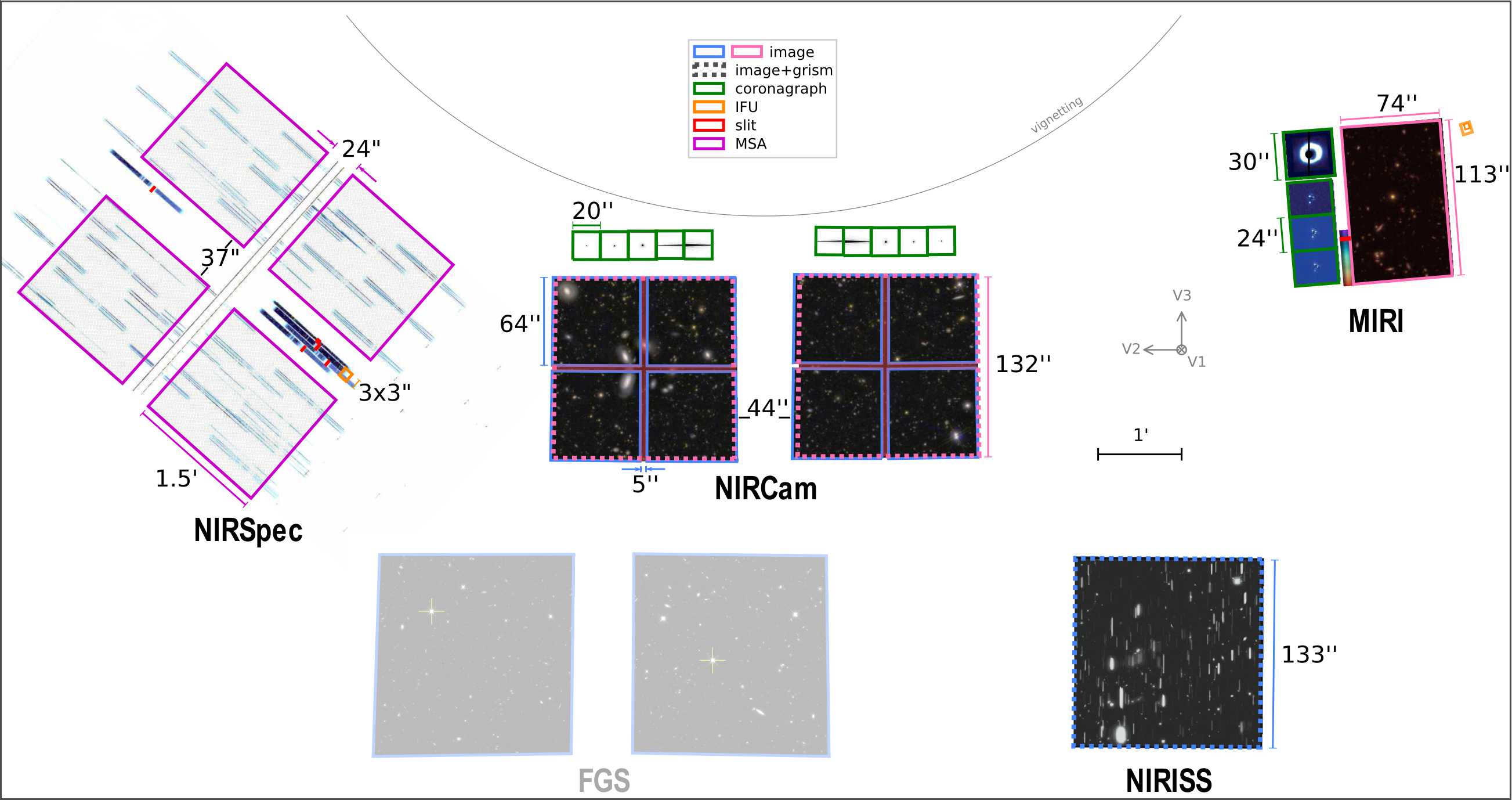The James Webb Space Telescope
The James Webb Space Telescope (JWST) is developed by the National Aeronautics and Space Administration (NASA), the European Space Agency (ESA) and the Canadian Space Agency (CSA). The JWST launch is planned for spring 2020, and the mission will last at least five years, with a target of ten years. The JWST is equipped with a 6.5 m diameter primary mirror, and four instruments: NIRCam, a near infrared camera (0.6 - 5 μm); NIRSpec, a near-infrared multi-object spectrograph (0.6 - 5 μm); MIRI, a medium infrared camera and spectrograph (5 - 28 μm); and NIRISS, a camera and a slitless spectrograph (0.6 - 5 μm). The instruments have been designed to answer fundamental questions in the fields of cosmology and the evolution of galaxies. Due to its outstanding sensitivity (spectroscopic studies down to AB 30 mag), this space observatory will have a significant impact on (1) the first generation of stars in primordial galaxies, (2) the assembly of galaxies and their evolution. The observation time will be divided between guaranteed time (GTO) and open time (GO). Open time will be subject to annual calls for proposals and will include key programs. The French community, which already participates in guaranteed time programs via ESA (15%), will be involved in deep extragalactic GO surveys, for which the efforts will be structured through the National Observation Service (SNO)
